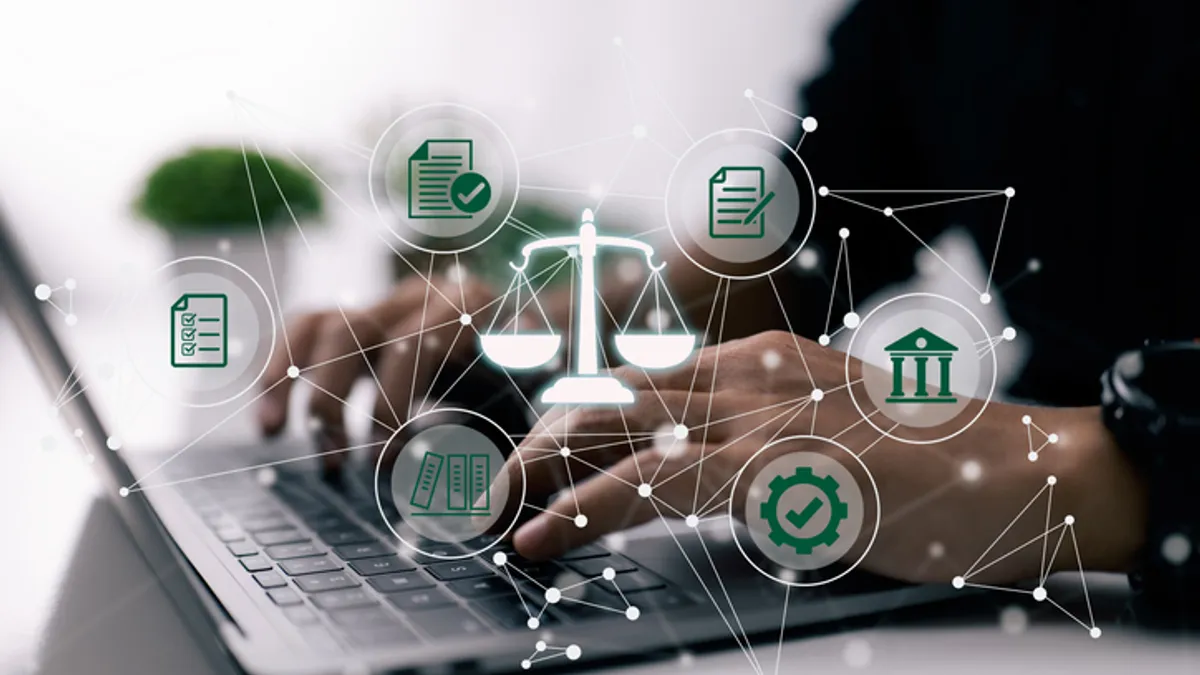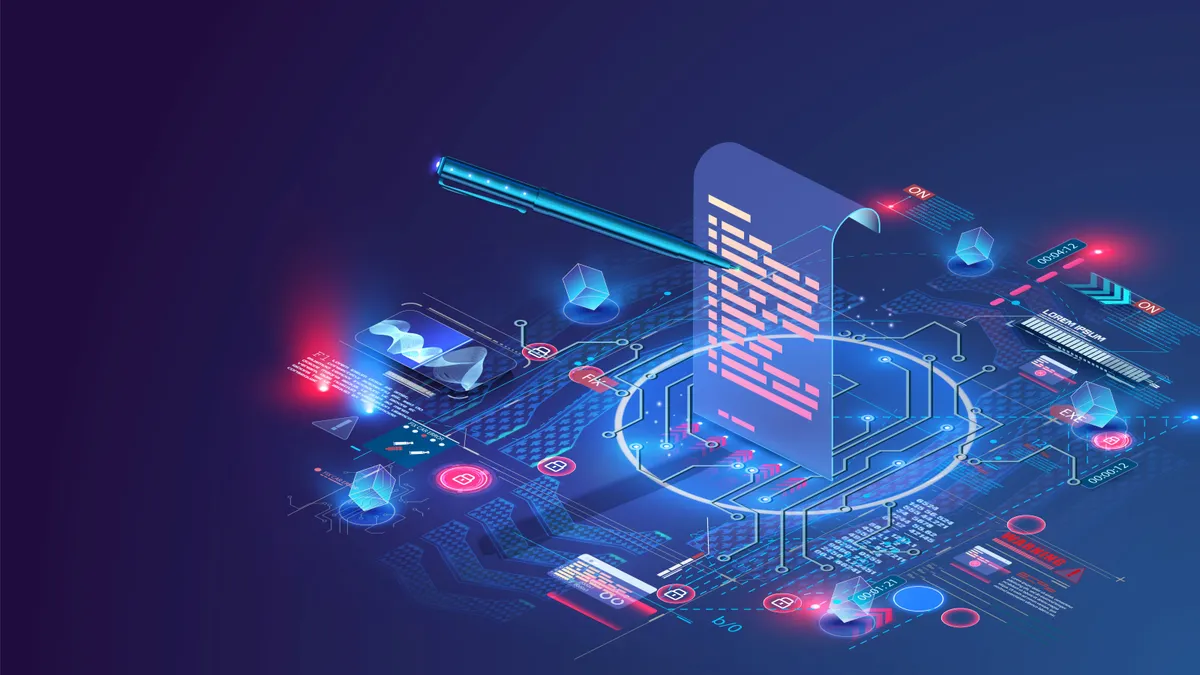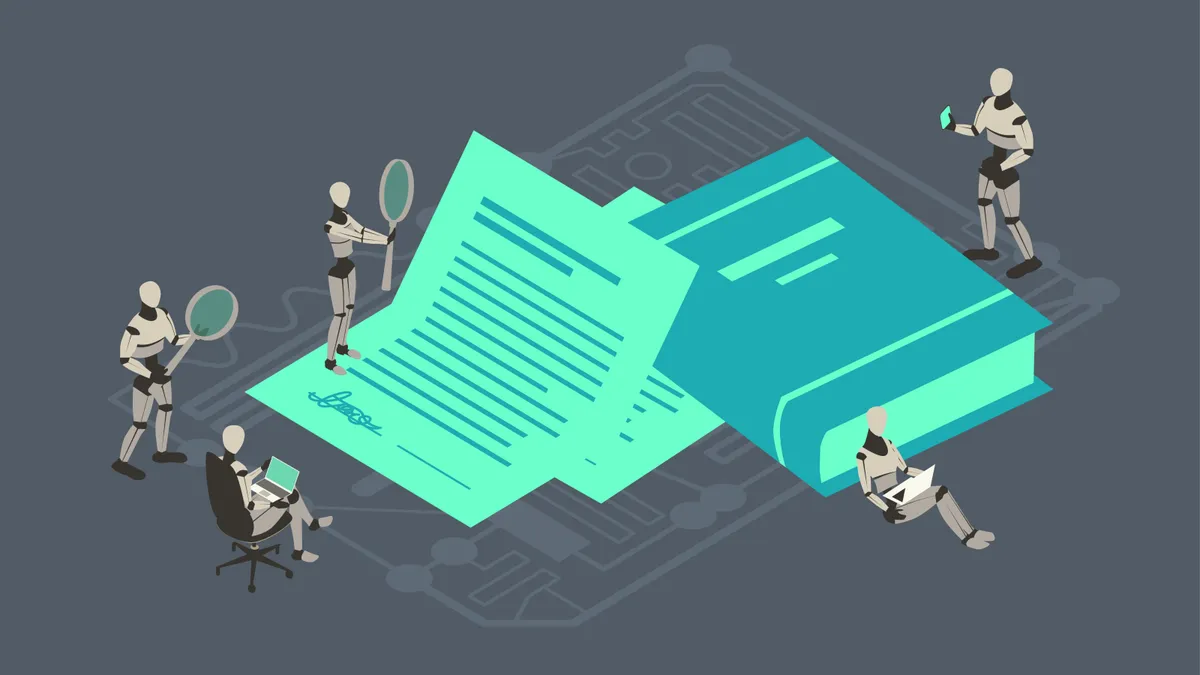Bernadette Bulacan is chief evangelist at Icertis, a contract management technology company. Views are the author’s own.
Adversity breeds innovation and that’s the case with legal operations.
The function rose to prominence during the Great Recession by helping legal teams bring data and efficiency to legal services as budgets were squeezed and risk surged.
That crisis subsided but the value delivered by legal operations was established. Since then, new crises and challenges have emerged, pushing legal operations professionals to evolve their discipline beyond what was once considered their scope. Underlying this evolution is the mandate that businesses — including legal — do more with less.
That’s why general counsel should think beyond the legal department and integrate their team’s technology and processes into the greater enterprise to enable data insights and automation that achieves greater efficiency and strategic value across the organization.
Achieving value beyond legal
The growing role and impact of legal operations and the need for robust technology are sharply illustrated in the results of the 15th Annual Law Department Operations Survey.
Most legal operations professionals surveyed (86%) said they were involved in strategic initiatives outside legal last year, up from 80 percent in 2021. And the role of technology is growing similarly: nearly half (48%) have a multi-year technology strategy and roadmap in place, and another 40% have plans to develop one this year.

Further, C-suite leaders are looking to reduce costs in today’s macro environment, but 24% of legal teams anticipate at least a 10% increase in annual spend this year compared to 2022. This is where technology comes into play to help bridge the gap.
By eliminating manual tasks and creating greater efficiencies, integrated technology allows legal teams to work smarter, not harder, and focus resources on strategic initiatives that impact the bottom line.
Automation and self-service processes that are accessible to those outside of the legal department allows the legal team to focus on higher value work while reducing operational costs to free up capital for the enterprise.
Connecting the dots across the enterprise
A hallmark of integrated technology is its ability to connect with major software systems beyond the legal department.
Applying emerging innovations like artificial intelligence supports an enterprise-wide technology stack that legal teams can leverage to enhance automation and surface insights that support more informed decision-making.
For example, contracts are arguably the most common touchpoint between legal and the rest of the business.
Due to issues like slow turnaround time, poor visibility and friction around the terms that must be negotiated, contract processes are all but crying out for digital solutions that harness the power of data and AI, inciting nearly one-third of survey respondents (30%) to evaluate or implement contract lifecycle management (CLM) over the next 12 months.
More specifically, integrating legal technology with other major software systems responsible for customer data, supplier data, enterprise resource data and employee data helps break legal insights out of its silos, connecting it with the processes it drives cross-functionally. It empowers self-service among other departments, provides access to a deeper data pool and enables automation and insights with clear business value.
Take, for instance, a global professional service firm’s team of more than 2,800 legal professionals worldwide that connected its CLM to its CRM using integrated software solutions. Managing thousands of customized, multilingual legal documents monthly, the company needed a modern solution to evolve its legal operations from a transactional function into a data-driven internal partner.
With the right technology, the company transformed its contracting experience with new capabilities, data analytics and integration with other key systems – enabling legal to work more effectively with other teams such as sales, and empowering teams to self-service.
Beyond sales, the integrated ecosystem also extends to tools that connect the right people, assets, and data to support the business with a single source of truth around customer relationships while ensuring the intent of every commercial relationship is fully realized.
Unlocking data for all users
AI has become a divisive topic among legal teams, particularly as the rise of ChatGPT and other large language model systems prompts business leaders to think about how the technology will evolve and support various business functions.
While the risk versus reward of AI is an ongoing conversation, its potential when applied to integrated data is substantial in terms of outcomes—increased revenue, reduced costs, ensured compliance, and mitigated risk—that are vital in the current business environment.
When integrated with technology like a company’s supplier relationship management solution and applied to the wealth of information contained in those systems, AI can help legal operations broaden their impact by extracting data at scale and making it accessible. For legal, data is largely unstructured and needs AI to do the complex work of structuring the data for analysis and automation.
For example, a leading location technology company manages 70,000 legal documents in non-digitized, unstructured forms, representing a huge wealth of data that needed to be captured to create a single source of truth, increase efficiency, protect against risk, and empower its employees to manage commercial relationships without heavy legal involvement.
By utilizing AI in its processes, the company can now extract commercial agreement metadata, attributes, and clauses at scale. In just one of many use cases, its sales teams can apply AI solutions to gain deeper insights into past customer agreements that allow them to make proactive decisions on renewals and up-sell to have a direct impact on the bottom line.
The data revolution is here. However, AI remains underutilized in legal departments, and understanding the real impact of AI trained on combined legal data and enterprise data will be critical to leveling up an organization’s decision-making within the legal function and beyond.
Opportunity to demonstrate value
Overall, the stakes are high as LDOs work to expand their impact on the business.
As LDOs seek to provide greater value to the larger enterprise, they must leverage and get more value from their technology stack – seamlessly connecting disparate systems across legal, procurement, accounting, and other teams to enable enhanced information flow.
With data and processes integrated throughout the organization, integrated technology that leverages AI becomes a powerful lever for avoiding risk, increasing efficiency, and improving performance.
It can truly be the bridge organizations need to get more from their legal departments, and savvy, technology-empowered LDOs are poised to drive change.


















